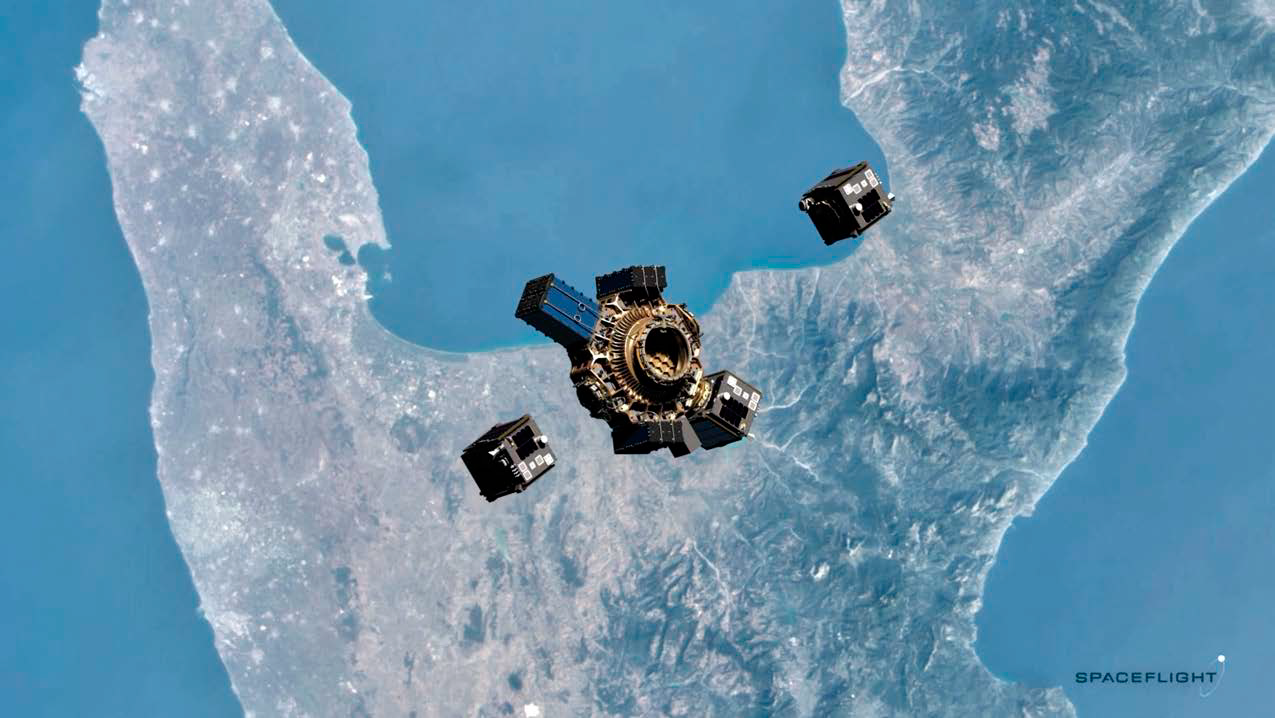The space industry has boomed over the past decade, producing cutting- edge innovations and groundbreaking missions — this growth has occurred against a backdrop of improved launch supply and growing launch demands.

The launch market has been jolted by the advent of modern, commercial companies. These companies are driving down launch costs via innovation in manufacturing and rocket reusability and then applying this to provide increasingly affordable and reliable rideshare; dedicated, flexible and precise launch with small launch vehicles (SLVs) and a swell of more refined and compelling new launch solutions that will be arriving over the coming years.
The demand for launch is rapidly growing with increasingly capable smallsats, exciting new smallsat applications as well as the deployment of mega-constellations. Amidst this growth, and within these market dynamics, is the critical need for in-space transportation.
Orbital transfer vehicles (OTVs) are meeting this demand and providing dynamic and flexible capabilities that support satellite organizations in driving innovation.
OTVs — Realizing Space Mobility
OTVs met the acute flexibility problems in the smallsat rideshare market by providing maneuverable vehicles at the interface between the launch vehicle and the satellite. These vehicles could take a satellite from an inconvenient rideshare deployment orbit to a desired operational orbit.
Where customers previously had to design highly capable, maneuverable systems, they can now reduce or remove propulsion systems, lower their costs and add vehicle capability that is more specially aligned to mission value.
Finally, customers can take advantage of affordable rideshare launch costs without having to sacrifice flexibility. OTVs simultaneously bring significant innovation to space access, enabling multiple orbital drop-off locations for various customers and the ability to reach unique orbits. Hosted payload capabilities remove burdens from payload operators, including lifetime maneuver and power management.
OTVs are a comprehensive tool for transportation on-orbit. OTV capabilities go beyond transportation, with unique features being leveraged to enhance missions. For example, per a recent OTV report from BryceTech, customers are seeing many benefits from OTVs, including lower cost to reach specific orbits than dedicated launches, logistics cost sharing, and additional on-orbit maneuvering services.
Orbital transfer vehicles enable more customers to achieve mission goals which, in turn, expands the space economy. OTVs are highly active in space logistics and growing in their presence in space. The BryceTe ch report states there were more than five active OTV missions in 2022, with the number of OTVs launched increasing in number.
Currently, OTVs are actively performing last mile delivery — transporting deployed or fixed payloads to multiple precise orbital destinations in Low Earth Orbit (LEO), geosynchronous orbit (GEO), and beyond. They’re also performing on-orbit relocation, rescuing failing satellites on-orbit and saving operators millions in costs.
Additionally, government and commercial customers with pathfinder and exploratory payloads are selecting cost-effective, hosted payload solutions, streamlining their missions and maximizing launch capacity.
Completing Space Mobility With In-Space Services
Beyond in-space transportation and logistics, OTVs are poised to provide on-orbit inspection, autonomous maintenance, on-orbit refueling and orbital debris removal in the coming years. On the near horizon, there are OTVs capable of performing services for remote space assets. This includes attaching or reattaching to satellites for additional orbital relocation services, providing inspection, maintenance, and repairs, refueling, and end-of-life deorbiting.
At this point, OTVs will have completed the entire need for space transportation, getting assets to space, moving and servicing assets in space, and taking assets out of space, thus removing all responsibility from space operators. Whether it’s a hosted payload on an OTV, or one being serviced, there’s safety in knowing someone else is getting a satellite to an appropriate state of operation.

By extending the use of OTVs into in-space services, their full offering becomes far more cost-effective and reduces the price of any one of these services to customers. On the cutting edge of space, OTVs are meeting the evolving diversified needs of satellite customers with innovative use cases and capabilities. In the near future, OTVs will be the backbone of space transportation and logistics.
OTVs On The Space Frontier
According to the Space Foundation, the space economy was valued at $469 billion in 2021, up 9% from 2020. As a core part of space infrastructure, OTVs are designed to play a key role in this larger economy. This has traction with investors, as space infrastructure private investment climbed to $14.5 billion in 2021, up 50% from 2020. OTVs are also targeting participation in higher value segments of the space market growth, including in-space assembly and manufacturing (ISAM) and satellite refueling.
Orbital transfer vehicles had relatively modest beginnings as port expanders and last-mile delivery vehicles, offering simple deployment and maneuvers to specific operational orbits. The OTVs of today are far more capable, with advanced satellite delivery options, satellite relocation and hosted payload services. These vehicles are technologically progressing rapidly and will soon be offering comprehensive space logistics support for every stage of mission life.
With such easy access to space, the space ecosystem will evolve, satellites and payloads will develop more efficient designs and new space use cases and applications will come to market. Also, OTVs are participating in advanced frontiers and are taking New Space out
of LEO, building lunar infrastructure, supporting the lunar economy, and moving further to Mars and the solar system. OTVs are stimulating innovation in the space industry, fostering economic growth, and are positioned to be keys enabler of the next industry transformation.
spaceflight.com

Author Evan Lerner is the Product Manager at Spaceflight, responsible for the development and management of the Sherpa orbital transfer vehicle (OTV) product line. He has experience in entrepreneurship, software and hardware product development, systems engineering, modeling and analysis, satellite operations, technical sales and academic research. Evan excels in interdisciplinary communications, information synthesis, process-driven problem-solving and product strategy. His previous experiences span Hedron, Analytical Space, Northrop Grumman and Orbital ATK.

